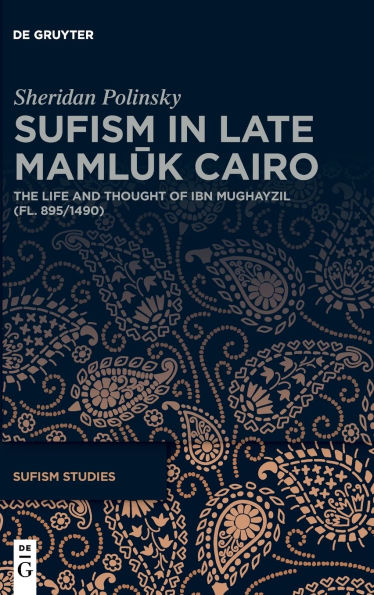Sufism in Late Mamluk Cairo: The Life and Thought of Ibn Mughayzil (fl. 895/1490)
This book examines the life and thought of Ibn Mughayzil (fl. 895/1490), a Shādhilī Sufi of late Mamlūk Cairo. It offers a portrait of the Sufi as an aspiring Shādhilī master and talented author whose two known writings reflect major themes of Mamlūk-era Sufism, such as the desire to unite the “exoteric” sciences (ʿilm al-ẓāhir) and the “esoteric” science (ʿilm al-bāṭin) or Sufism. At the same time, his works are distinguished by a number of features. Most notable is his treatment of the waking vision of Prophet Muḥammad after death, an experience that many Sufis claimed to have underwent. The study suggests that Ibn Mughayzil was the first author to produce a systematic and comprehensive examination of the topic and argues that he makes an important contribution by defending its authenticity and orthodoxy. Furthermore, his engagement with other key issues of his time, such as God’s oneness and religious diversity, reveal that while often driven by the aim of defending Sufis from accusations of error, he was a creative synthesizer, drawing from a wide range of Sufi and other sources to develop and demonstrate his positions. Study of Ibn Mughayzil sheds light on the nature and quality of Mamlūk Sufi literature as well as the reception of earlier ideas, such as those of Ibn ʿArabī (d. 638/1240) and Ibn al-Fāriḍ (d. 632/1235).
1147556020
Sufism in Late Mamluk Cairo: The Life and Thought of Ibn Mughayzil (fl. 895/1490)
This book examines the life and thought of Ibn Mughayzil (fl. 895/1490), a Shādhilī Sufi of late Mamlūk Cairo. It offers a portrait of the Sufi as an aspiring Shādhilī master and talented author whose two known writings reflect major themes of Mamlūk-era Sufism, such as the desire to unite the “exoteric” sciences (ʿilm al-ẓāhir) and the “esoteric” science (ʿilm al-bāṭin) or Sufism. At the same time, his works are distinguished by a number of features. Most notable is his treatment of the waking vision of Prophet Muḥammad after death, an experience that many Sufis claimed to have underwent. The study suggests that Ibn Mughayzil was the first author to produce a systematic and comprehensive examination of the topic and argues that he makes an important contribution by defending its authenticity and orthodoxy. Furthermore, his engagement with other key issues of his time, such as God’s oneness and religious diversity, reveal that while often driven by the aim of defending Sufis from accusations of error, he was a creative synthesizer, drawing from a wide range of Sufi and other sources to develop and demonstrate his positions. Study of Ibn Mughayzil sheds light on the nature and quality of Mamlūk Sufi literature as well as the reception of earlier ideas, such as those of Ibn ʿArabī (d. 638/1240) and Ibn al-Fāriḍ (d. 632/1235).
109.99
Pre Order
5
1

Sufism in Late Mamluk Cairo: The Life and Thought of Ibn Mughayzil (fl. 895/1490)
186
Sufism in Late Mamluk Cairo: The Life and Thought of Ibn Mughayzil (fl. 895/1490)
186Hardcover
$109.99
109.99
Pre Order

Product Details
| ISBN-13: | 9783119148450 |
|---|---|
| Publisher: | De Gruyter |
| Publication date: | 08/04/2025 |
| Series: | Sufism Studies , #7 |
| Pages: | 186 |
| Product dimensions: | 6.10(w) x 9.06(h) x (d) |
About the Author
From the B&N Reads Blog
